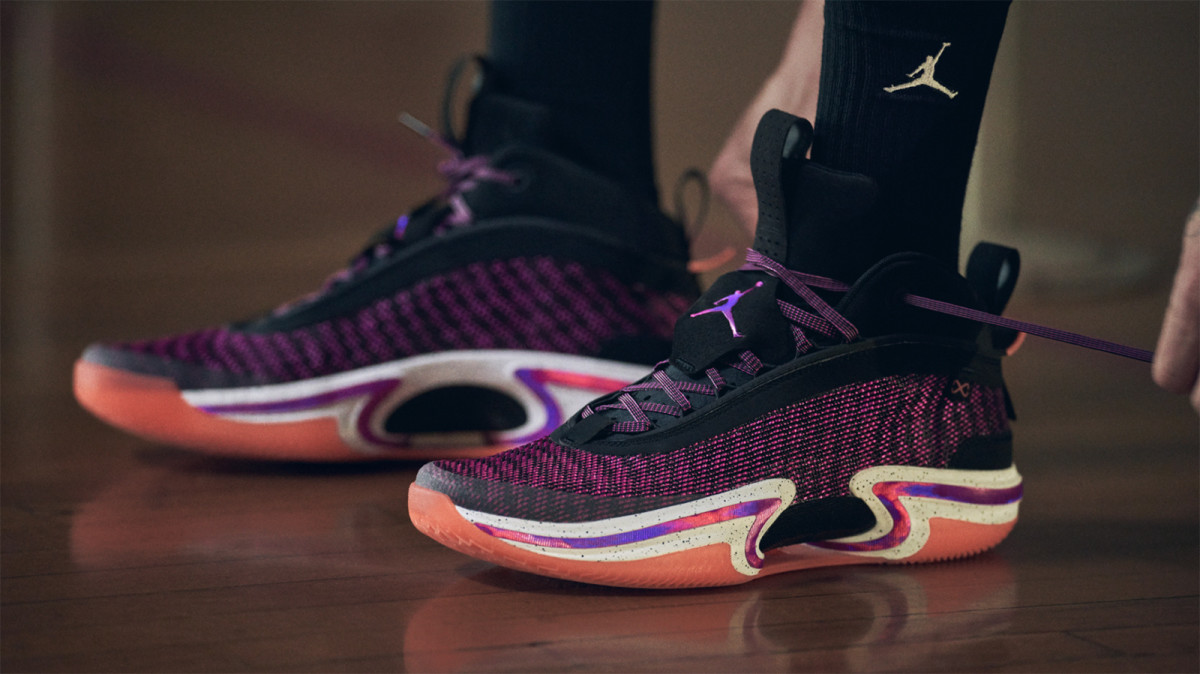How It Feels to Present A Sneaker to Michael Jordan
Tate Kuerbis has been at Nike for 26 years and probably has one of the coolest but most nerve-wracking jobs in the world: designing shoes for Michael Jordan. As the senior footwear designer for Jordan Brand, Tate is tasked with creating the game shoe for the most iconic signature sneaker line ever created. After launching the 36th signature shoe in its legendary history, Kuerbis says he still faces a lot of pressure designing silhouettes for Jordan—especially when the face of the sneaker hasn’t laced up a pair on an NBA court since 2003.
“It’s always an honor to work on a project like this, and there is a ton of pressure. But the good thing for me and the team is, I feel like every year we raise the bar,” says Kuerbis. “We know what we did the previous year and how we can improve it from athlete feedback and from new technology. So we have a lot of tools that we can use that help the design process. We talked a lot about the idea of focusing on performance first and taking it back to the courts. I feel like that has sort of made it easier in some ways, because we want to make the very best-performing basketball shoe on the court.”

Kuerbis has led the design process on every Jordan from 31 through 36 and has worked on products for other athletes such as Serena Williams and Derek Jeter. But he still gets nervous about pitching sneakers to MJ himself.
“Mostly if it is not right [laughs]. MJ still loves the game shoe. It’s really his shoe, and he is still a competitor and he wants the best. But he understands the process enough and has done it so many times. You can go to him and show him some rough ideas, and he’s really good about finding the positive parts about it and how we can also improve it. It always goes back to performance.
“We built a previous relationship with him, and I still get a little nervous sometimes that he might not like it, but it’s a process and he enjoys being a part of it. It’s fun getting to the end, and he enjoys the product. It makes me sleep good at night.”
Kuerbis and his team of designers wanted the 36 to be one of the lightest Air Jordan models ever. The team used jacquard leno-weave, which is a lighter and more breathable material than previous uppers in the Air Jordan.
“He was more surprised than anything. I don’t think he expected us to come up with something that was visually so exciting but also lightweight,” says Kuerbis. “I literally threw him the shoe and he couldn’t believe how light it was. And then he started looking at the material, and he was just fascinated. The fact that you can see through it. It looked rich and it looked super futuristic and super technical, so those were a couple things he was excited about the shoe.”
The Air Jordan 36 follows the tradition that started with the 31 by paying homage to the Air Jordan sneaker that was released 30 years before. The 36 has several nods to the Air Jordan VI, the first sneaker Jordan won a championship in back in 1991.
You can also find a chain design on the back of the heel in the midsole, which signifies six championships and represents the gold chain that Jordan is known for. The cutout on the outsole is the same design and shape as the Air Jordan VI tongue. There’s a ribbon wrapped around the eye with braille on it: one reads “Michael Jordan” and another reads “23.”
The brand also took a global approach with the new model in time for the athletes to wear during the Tokyo Olympics. Dubbed the “Global Game”—player-exclusive models from Jordan’s global roster, which includes Guo Ailun, Jayson Tatum, Rui Hachimura, Luka Dončić and Kia Nurse, will be released around the world.
The 36’s first colorway, “Glory,” is available now.
More NBA Coverage:
